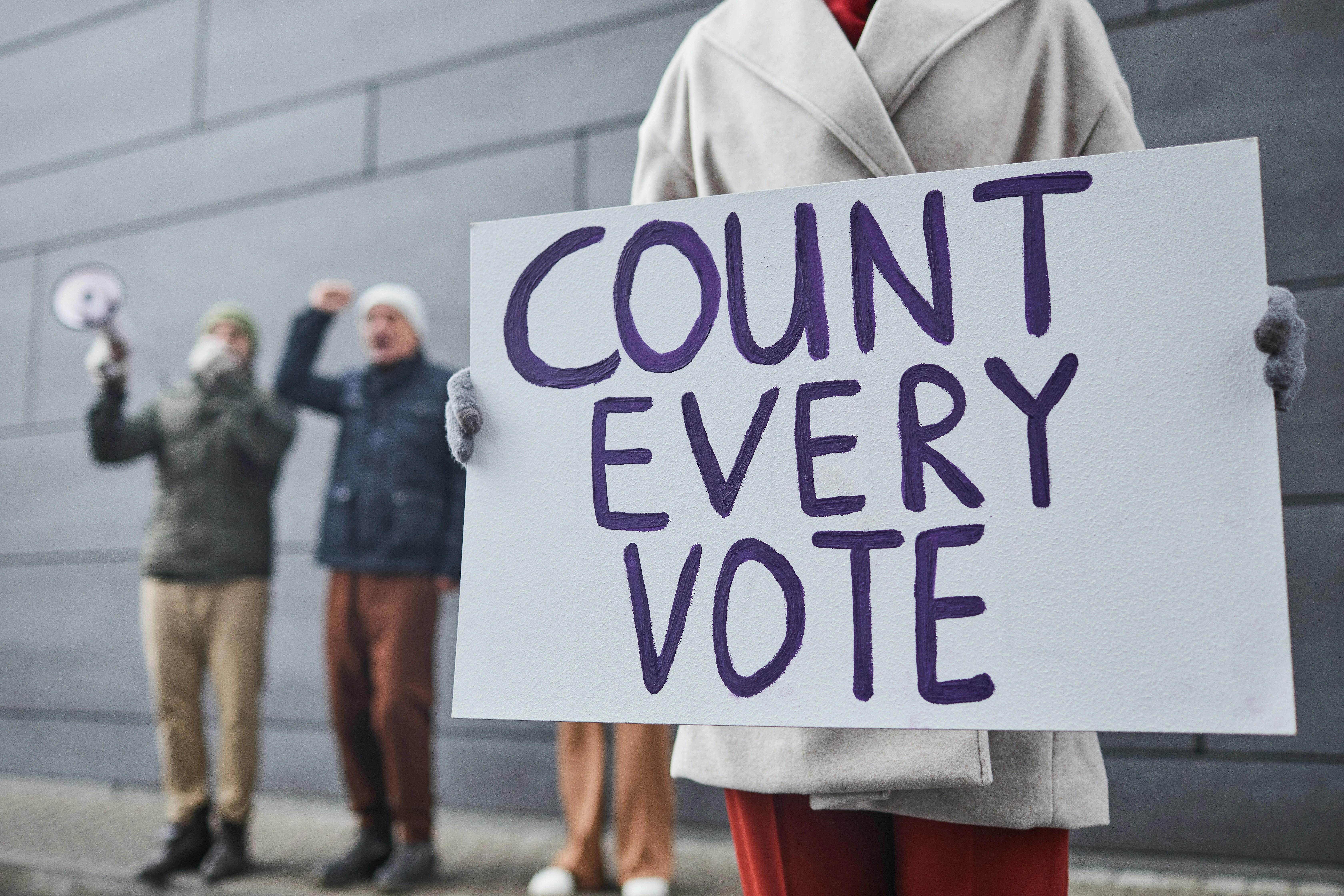Governor Terry McAuliffe: Felony Disenfranchisement
Voting rights are fundamental rights to which everybody is entitled and the ability to vote marks democracy and ought to be upheld by all people. Voting is a mark one’s commitment towards their country and heritage, and regardless, the majority of States in America practice felony disenfranchisement. Felony disenfranchisement refers to the revocation of one’ voting rights when they are convicted of felony charges. It is a concept that excludes ex-felons from participating in the voting process temporarily or permanently. Voting rights can only be reinstated by a court order or direct executive order from the State Governor.


Introduction to Policy
Recent times have seen amplified calls for the re-enfranchisement of convicts within the States. Before legal reviews, Virginia included one of the States that eternally disenfranchised ex-convicts and felons. On August 22, 2016, Governor Terry McAuliffe of Virginia restored voting rights to 13,000 ex-convicts. In dispensing the order, he reiterated his belief in second chances and the belief that everyone, given the right opportunity, can reform. Voting rights restoration in Virginia would allow ex-convicts to participate in State and nationwide voting. Essentially, it would sanction the ex-convicts to practice their right to vote. It is estimated that over 5.8 million Americans are barred from voting because of the disenfranchising laws (Gibson, 2016). [“Write my essay for me?” Get help here.]
The restoration of the law permitting 13,000 ex-felons to vote was a review of the earlier re-enfranchisement enterprise that had targeted over 200,000 ex-convicts. The earlier order had been revoked by the Supreme Court of Virginia, which prevailed that in issuing voting rights to 13,000 former convicts, the governor had gone against the State Constitution. The Constitution of Virginia predicated that ex-felon rights would only be restored upon application and verification from the respective State agencies (Ho, 2015). Nonetheless, it provides a provision that allows the prevailing Governor to issue a decree empowering ex-felons to vote. Governor Terry McAuliffe employed this provision to reinforce his edict. On August 22, 2016, the Governor determined that he would individually assess voting restoration requests from ex-felons.[Need an essay writing service? Find help here.]
The Supreme Court prevailed that, even though it was in support of the initiative, the Governor had disregarded significant factors that may have ramifications for the entire society. The court opinionated that mass re-enfranchisement portends a danger to the society given that it collectively empowers the undeserving as well as the deserving in the society without creating a distinction (Holloway, 2009). By the time the clemency order had been admitted for contestation in the Supreme Court, over 70,000 ex-felons had been re-enfranchised. The court argued that there was a need to follow legal channels in issuing a sensitive order lest it is misinterpreted.
Events Leading to the Policy
The law authorizing ex-felons to reclaim their voting rights in Virginia is a culmination of myriad collective efforts spanning decades. Calls for voting rights restoration in Virginia began in the nineteenth century. At the time, ex-felons were barred permanently from accessing voter rights. Advocates of the initiative prevailed that, to fully integrate into the society, ex-felons should be granted every freedom possible (Holloway, 2009). Alienation of ex-convicts would only inspire disillusionment, which in turn inspires a recurrence of criminal offenses. This stimulated the formation of a provision within the Virginian Constitution that empowered ex-felons to request to have their voter rights restored.
Despite the development, only a few entities were allowed their voting rights. This is because the process was marred by several challenges and restrictions that curtailed the extension of the voting rights to ex-felons. Only a handful of ex-felons benefited from the legal initiative. The slow uptake of the legal framework led to calls for reinforcement of executive orders by the Governors empowering ex-felons to vote. One of the institutions that were at the forefront in calling for the use of executive order by the Governors was the Brennan Center. It reiterated these calls since 2005 when Governor of Virginia was Mark Warner. It further reinforced its requests through the governorship of Tim Kaine in 2009 (Brennan Center for Justice, 2016).

Nonetheless, it was not until 2013 that calls for felony re-enfranchisement gained momentum. The prevailing Governor, Robert McDonnell, through an executive order, officially terminated the law that permanently disenfranchised ex-felons from voting. His efforts were pivotal given that they marked the evolution from the old legal framework to a new legal framework that would ease the allowance of voting rights to ex-convicts (Gibson, 2015). Under his guardianship, individuals who had completed their sentences for nonviolent crimes were inevitably eligible to vote. However, it was mandatory, under the McDonnell inspired framework, that each ex-convict should have a rights restoration certification before participating in the voting process.
Upon ascension into Governorship, Governor Terry McAuliffe indicated that he would further extend efforts towards the streamlining of the efforts started by his predecessors. In addressing the issue, the governor began by broadening the category of individuals who would have their voting rights automatically restored upon completion of their sentences. Furthermore, he limited the amount of time that individuals who wished to apply for voter registration rights had to wait. Initially, the ex-felons were forced to wait for five years, but in his first term of office, McAuliffe curtailed the period to 3 years (Wise & Shelby, 2016).
In June 2015, Governor McAuliffe rescinded the clause that imparted the responsibility of paying court fees to the applicants of the voter rights restoration. Before the initiative, voters were forced to service all the costs that were engaged in the voter rights registration processes (Brennan Center for Justice, 2016). In April 2016, Governor McAuliffe determined an executive order that addressed felony convicts. In the order, persons with felony convictions and had completed their sentences and parole period was allowed the right to vote. He further reinstated the order in May and June and allowed over 70,000 ex-felons to access voting rights.
Regardless of the authority of his position, his declaration was challenged in a court of law on July 2016. This case was overseen by the Virginia Supreme Court in the Howell vs. McAuliffe case (Ho, 2016). The court prevailed that in issuing the order, the governor had acted in contempt of the constitution. Essentially, it was designated that his actions were a breach of the Virginia constitution. Therefore, the vote rights of the ex-felons who had registered in the period before the nullification of an executive order by the court were annulled. The court verdict forced the governor to review his re-enfranchisement policy. This led to the establishment of a new executive order that would address constitutional factors.
Subsequently, in August 2016, Governor McAuliffe provided an executive order that was in line with the demands of the court and did not breach the constitution (Ho, 2016). He, together with other stakeholders, determined a voting rights registration process that were not only efficient but mitigated the bureaucracies that were initially engaged in determining individuals who were eligible for the extension of the voting rights. Currently, the executive order comprises the legal framework, which is engaged in determining individuals who are to be extended voting rights. It further establishes a framework through which information is disseminated to the public on the issue of voting rights for ex-felons.
Key Components

The prevailing Virginia felon re-enfranchisement policies have several key components. To begin with, it is intended to empower ex-felons to be able to vote. The re-enfranchisement laws restore voting rights to individuals who will have finalized their sentences. It further allows for the restoration of votes to individuals who will have been released from a period of supervised release. The target comprises of individuals who are not on probation and parole. The law further began by restoring the voting right orders to those who had their voting rights revoked by the Supreme Court of Virginia.
Likewise, under the revised executive order, the Secretary of the Commonwealth will be tasked with the duty of identifying individuals who are eligible for paroles (Brennan Center for Justice, 2016). The first target priority embraces individuals who had been released from prison for the longest time. After identification of the target group, the Secretary of Commonwealth will forward their names to the Governor on a rolling basis. The final release order lies with the Governor. The Governor will assess the names given to him and determine whether they should be affixed the rights or not depending on their behavior while in incarceration and the nature of the crime that led to their incarceration.
The legal framework further allows individuals to apply directly to the Secretary’s office (Wise & Shelby, 2016). This option is available to individuals that may have been overlooked in the assessment phase by the Secretary of Congress. Individuals can apply through an online platform or by mail. The Secretary of Congress will take these requests into consideration and forward their names to the Governor who will review them and ratify them. After determination of the eligible names, the Secretary of Congress will announce the names, a process that is expected to be done on a monthly basis.
Stakeholders
There are several stakeholders who participated in the development of and are addressed the Virginia felony re-enfranchisement legal framework. The first group of stakeholders comprises governors and other Virginia State administrative officials. The development of the prevailing legal framework was a culmination of the efforts of four different governors in different eras of leadership. They include Governor Mark Warner, Governor Tim Kaine, Governor Robert McDonnell and the major player, Governor Terry McAuliffe (Brennan Center for Justice, 2016). The other stakeholders comprise ex-convicts and ex-felons. The law is intended to allow ex-convicts who have served their sentences to access an employ their rights to vote.
The next stakeholder comprises the residents and political setting of Virginia. The ex-felon re-enfranchisement has an implication on the society of Virginia (Wise & Shelby, 2016). It significantly added the number of potential voters to the society. This may have an influence on the outcomes of elective processes within the State. The other stakeholders in the venture comprise the Virginia Supreme Court. The Supreme Court prevailed on the metrics to be engaged in the development of the felony re-enfranchisement laws. The Supreme Court was responsible for reviewing the initial executive order issued by the prevailing governor.

The last group of stakeholders includes activists such as the Brenner Center (Brennan Center for Justice, 2016). These social agencies demanded and repeatedly advocated for the empowerment of the ex-felons by granting them all the freedom that applied to a man not in incarceration. The prevailing ex-felon re-enfranchisement initiative is a succinct response to their requests given that it allows members of the society to access all fundamental rights of a free individual. The law guarantees equal treatment of all Americans, which is pivotal in promoting equality. Black activist groups in Virginia further benefited from the initiative. [Click Essay Writer to order your essay]
Effectiveness of the Policy
Since the inception of the law, the felony re-enfranchisement executive order, issued by Governor Terry McAuliffe, has seen tremendous success. In the first executive order, prior to being challenged in court, 13000 individuals had their voting rights restored. Nonetheless, despite the court order, the whole of the 13,000 individuals were granted voting power through an executive order. The enforcement of the executive order as issued by Governor Terry McAuliffe further restored voting rights to over 200,000 individuals (Brennan Center for Justice, 2016). In essence, the order empowers an increasing number of Virginians to partake in the voting process.
The order further predicated that on the 15th of every month, an announcement would be made of individuals who will have succeeded in having their voter power restored. Essentially, after the assessment of all the names of the applicants by the Secretary of Congress, the secretary is tasked with the duty of ensuring that the information is disseminated publicly to the stakeholders (Brennan Center for Justice, 2016). The executive order, through its application, restores voting rights to hundreds of individuals on a monthly basis. The order enabled some of the successful applicants to participate in the just concluded American elections. Votes by the ex-felons influence the outcome of electoral contests.
The Opposing Viewpoints on Felony re-enfranchisement
Despite the effectiveness of the executive order as determined by Governor McAuliffe, there is a myriad assertion against the initiative. To begin with, the challengers of the order prevail that it is a consequence of imagined racial problems. According to this faction, the felony re-enfranchisement initiative will only benefit the minority communities and curtail the application of justice. Nonetheless, these assertions overlook the reality on the ground. The majority of the individuals who are barred from voting are those from the black community. To reinforce democracy, it is necessary to protect the rights of all voters irrespective of their racial profiles.
Likewise, opponents of the executive order prevail that it goes against the constitutional framework of Virginia (William J. Howell, et. al, Petitioners v. Terence R. McAuliffe, in his official capacity as Governor of Virginia, et. al., 2016). Nonetheless, in issuing the new executive order, Governor Terry McAuliffe publicly declared that it was under his mandate to issue such an order in his discretion. The Constitution of Virginia reinforces the need for democracy and protects the rights of all individuals regardless of their heritages. The felony re-enfranchisement initiative is an extension of the constitutional demands. Once people have served their sentences and regained their freedom, they should be extended every freedom possible to enhance their integration into the community.
Alternatively, others question the aptitudes of ex-felons to make valid and efficient decisions. They prevail that committing a crime is a mark of mental instability. In voting, it is expected that an individual will have the capability to weigh options and determine a decision that is acceptable and morally upright. The proponents of this notion prevail that ex-convicts are barred from voting for the same reasons that children and the mentally ill are barred. Essentially, it is assumed that they are not able to make their decisions and may be motivated by unregulated desires in casting their votes, a factor that might hamper the electoral process.

There are also individuals who reinforce that the automatic restoration of voting rights comprises a menace to the society. Based on these notions, ex-felons should only be granted voting rights after they have projected an ability and willingness to abide with the legal frameworks of Virginia (William J. Howell, et. al, Petitioners v. Terence R. McAuliffe, in his official capacity as Governor of Virginia, et. al., 2016). Automatic restoration would thus result in a blanket situation, which may target both the intended and the unintended. Essentially, restoration of voter rights should take a longer period. The respective authorities should be in a position to positively reinforce one’s willingness and ability to engage in community activities. Automatic restoration would curtail these initiatives.
Opinion on the Felony re-enfranchisement Laws
Despite the opposing viewpoints on felony disenfranchisement, I support the initiative in its current form. The executive order is still open to review and further addresses all the stakeholder concerns. The seeds of felony disenfranchisement were sown in the days of slavery. Legal frameworks were created to curtail the participation and successes of the black individual in the political scene. The effort towards mitigating the threat posed by the African American in Virginia led to the creation of laws that advocated for five-year minimum sentences for any black offenders (Gibson, 2015). These laws were to be enforced regardless of the nature of the crime. It is under these frameworks that the felony enfranchisement laws were created.
The policy agenda led to a drop in the number of White individuals who were incarcerated. The prevailing governor in 1829, Governor Giles prevailed that the few number of White race arrests was an indication of the White race’s honor (Gibson, 2015). It was then decided that universal suffrage would negate the progress of the Virginia community. Therefore, the governor rationalized efforts to ensure that black ex-convicts were barred from voting. It further limited the participation of poor Whites from voting. Voting was thus a preserve of the rich and White in the society. Since then Virginia has made significant strides in the attainment of universal suffrage.
However, before Governor McAuliffe’s order, the felony disenfranchisement laws in practice within Virginia had continued to reflect the racial premises that were involved in its creation (Gibson, 2015). Consequently, given that more than any other community, the blacks are to be found in the prisons, the laws negatively affect the black community. In an era of universal suffrage and enlightenment, it is necessary to engage metrics that promote democratic principles and fairness in the community. The executive order as issued by Governor Terry McAuliffe is a significant step towards the attainment of 21st Century suffrage. I further recommend that in the future revisions of the legal framework, the re-enfranchisement policy should be extended to all ex-convicts regardless of their crimes. When one is admitted back to the society, they should be able to enjoy all the rights that every other individual in the society enjoys.
Conclusion
Virginia is currently operating under a legal framework that is aligned towards felony re-enfranchisement. The prevailing Virginia governor, Terry McAuliffe established this law through an executive order, and under the legal framework, ex-convicts would have their voting rights restored. The executive order has been the subject of lawsuits by opponents of the initiative who prevail that it hampers the succinct application of justice. Regardless, the law is essential given that it allows ex-convicts to integrate into the community fully. It further grants them the opportunity to determine their political environment.
References
Gibson, H. A. (2015). Felons and the Right to Vote in Virginia. The Virginia Newsletter, 9, 1-9.
Ho, D. E. (2016, July 19). Virginia needs to fix its racist voting laws. Retrieved from The New York Times
Holloway, P. (2009). ‘A Chicken-Stealer shall lose his vote’: Disenfranchisement for larceny in the South. Journal of Southern History, 75(4), 931-962.Voting Rights Restoration Efforts in Virginia. (2016, October 14).
William J. Howell, et. al, Petitioners v. Terence R. McAuliffe, in his official capacity as Governor of Virginia, et. al., 160784 (The Supreme Court of Virginia June 27, 2016 ).
Wise, S., & Brown, S. (2016, August 22). Governor McAuliffe restores voting rights to 13,000
felons.






